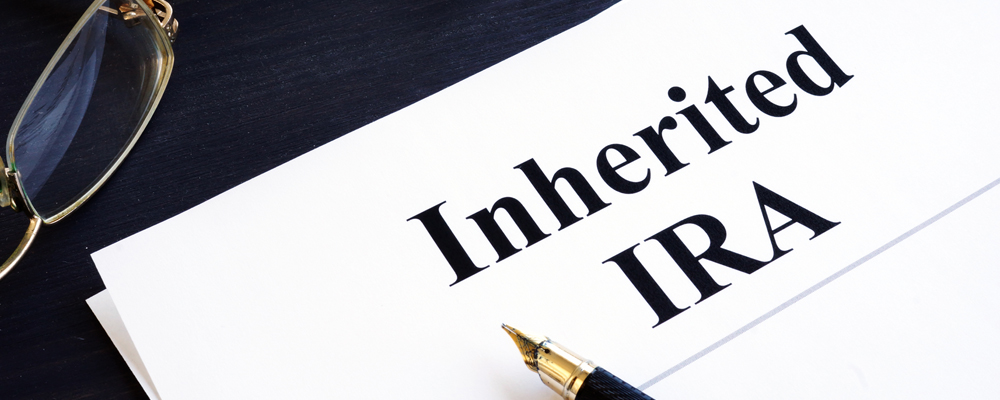For many years, beneficiaries of inherited IRAs were permitted to withdraw the balances over their life expectancies. Then, the SECURE Act largely eliminated this tax deferral opportunity. Its effective date of December 31, 2019 could be called “The Day the Stretch IRA Died”.
Beginning in 2020, most inherited IRA beneficiaries have been required to withdraw the entire balance of the IRA by December 31 of the year which includes the 10th anniversary of the owner’s death.
Throughout 2020 and 2021, Treasury provided little guidance on the following questions:
- Which types of beneficiaries are specifically subject to the 10-year Rule?
- At what rate, within the 10-Year window, must the inherited IRA balance be withdrawn? (Operating without any guidance, many tax advisors held that no withdrawals were required until the 10th anniversary year).
On February 24, 2022, Treasury issued 275 pages of Proposed Amendments of Regulations relating to required minimum distributions. These provide ANSWERS to the above questions. The proposed regulations outline distribution requirements by dividing fact patterns into two categories.
Category I: 10-Year Rule does not apply:
- the IRA owner died before December 31, 2019 (the effective date of the SECURE Act), or
- the IRA owner died prior to their required beginning date for minimum distributions, or
- the IRA beneficiary is an Eligible Designated Beneficiary.
Eligible Designated Beneficiary is defined as:
- The surviving spouse of the IRA owner (spouses continue to be eligible to treat the inherited IRA as their own), or
- A minor child of the IRA owner (after reaching age 21 see Category II), or
- A disabled person, or
- A chronically ill person, or
- A person no more than 10-Years younger than the IRA owner (the beneficiary was born on or before the date that the IRA owner turned Age 10)
All eligible designated beneficiaries, with the exception of the surviving spouse, will calculate the required minimum distribution based on their remaining life expectancy.
Category II: 10-Year Rule applies:
- the IRA owner died after December 31, 2019, and
- the IRA owner died on or after their required beginning date for minimum distributions, and
- the beneficiary is not an Eligible Designated Beneficiary as defined above.
IRA beneficiaries in Category II are required to take annual minimum distributions in Years 1-9, based on the beneficiary’s life expectancy. The entire IRA balance must be distributed in Year 10. A new table sets forth the Single Life expectancy of IRA beneficiaries from Age 0 to Age 120+.
The Proposed Regulations are effective January 1, 2022. Financial institutions have no duty to calculate the required minimum distributions or advise beneficiaries. The Proposed Regulations define the required minimum distributions for inherited IRA beneficiaries, but as with all required minimum distributions, beneficiaries are permitted to take a larger distributions.
If you have inherited an IRA, we expect you will have questions and look forward to helping you navigate the new rules. We anticipate that the following questions will arise frequently.
Question 1: How do these rules apply when inheriting a Roth IRA?
Answer 1: Since a Roth IRA has no required minimum distribution there is no required beginning date. The same rules are applied, ignoring any reference to a required beginning date. If a Roth IRA beneficiary meets the requirements of Category II, the 10-Year Rule applies. However, no distributions are required until December of the 10th anniversary year. At that point, the entire Roth IRA would have to be distributed. Many tax advisors will undoubtedly make this recommendation.
Question 2: What if, under the new proposed regulations, an IRA beneficiary should have taken a distribution in 2021, but did not?
Answer 2: For 2021, beneficiaries are able to avoid excise penalties by applying earlier Regulations. These beneficiaries have three options available:
- To not withdraw their 2021 RMD, use Form 5329 to disclose that no distributions were taken and request any penalty be waived. Attach the completed Form 5329 to a timely filed individual income tax return, or
- To withdraw their 2021 RMD (in addition to their 2022 RMD) by the end of 2022, and report the total distribution amount on their 2022 individual income tax return, or
- To withdraw their 2021 RMD before filing the 2021 individual income tax return, and disclose the distribution amount on Form 5329.
Question 3: What happens if the inherited IRA beneficiary dies before withdrawing the entire IRA balance?
Answer 3: Any successor inherited IRA beneficiary is automatically subject to the 10-Year rule of Category II. If the previous beneficiary met the requirements of Category I, then the successor beneficiary applies the 10-Year rule based on their life expectancy. However if previous beneficiary was subject to the requirements of Category II, the successor beneficiary must continue withdrawals on the previously determined 10-year minimum distribution schedule.
Retirement accounts are a primary component of American families’ wealth. In the case of traditional IRAs, every dime that must eventually be distributed is subject to income tax at ordinary income tax rates. Designating children, grandchildren, trusts and charities as primary and/or contingent IRA beneficiaries can create significant opportunities. “Cascading beneficiary” strategies can provide families with both income tax, estate tax and asset protection advantages.
These new Proposed Regulations provide clarity that has been needed for IRA beneficiaries.
Have a question related to your specific situation? Contact PBMares today for help with making the most of these opportunities.





